Ultimate guide to booking flights to Japan with transferable points
Signing up for credit cards through partner links earns us a commission. Terms apply to the offers listed on this page. Here’s our full advertising policy: How we make money.
Update: One or more card offers in this post are no longer available. Check our Hot Deals for the latest offers.If a trip to Japan isn’t on your bucket list it should be. It’s one of my favorite places
in the world and it’s hard not to fall in love with the culture, the food, the public transportation . . . and the world-class toilets.
With the Olympics coming up let’s take a look at how to get to Japan using transferable travel credit card points, like Chase Ultimate Rewards and Amex Membership Rewards.

How to use transferable points for flights to Japan
To keep things simple, I’ll describe the best ways to fly in and out of Tokyo and I won’t cover every option for every different type of flexible rewards. Instead, I’ll review the most useful and practical transfer partners.
I’ll cover the basics that will help you make an informed decision:
- Transfer ratio: How many points do you need to transfer to get the number of miles you need?
- Transfer time: How long does it usually take to transfer your points to the airline? This is important because you don’t want to find an award only to see it disappear while you’re waiting for the miles to show up in your account.
- Award prices: How many miles will it take to book a flight to Japan with a particular airline?
- Partner award prices: You can use most airline miles to book award flights on their partner airlines. For example, you can use United Airlines miles to book award seats on ANA. However, airlines typically have different award charts for their partner airlines. And partner award seats are usually harder to find because in many cases, you’ll only be able to book the lowest priced (e.g., Saver level) awards. Also, airlines sometimes don’t allow partner bookings for business or first-class seats.
- Fuel surcharges: When you book an award ticket, you’ll always have to pay for taxes and fees, which can be very high depending on where you’re going (e.g., London). But some airlines also add fuel surcharges in addition to the taxes and fees. This can add hundreds of dollars to the ticket cost. So I’ll let you know whether or not you can expect these types of charges with each particular airline.
- Pros: What are the reasons you’d want to transfer points to this airline?
- Cons: What are the downsides of transferring points to this airline?
- Other notes: If there are any special rules, tips, or tricks you should know for the airline, they’ll be covered here.
Chase Ultimate Rewards points
You can earn transferable Chase Ultimate Rewards points with the following cards:
- Chase Sapphire Preferred® Card
- Chase Sapphire Reserve®
- Ink Business Preferred Credit Card
And the Chase Ultimate Rewards points you earn with the following no-annual-fee cards can be pooled onto the “premium” cards listed above and then transferred to Chase’s travel partners:
- Chase Freedom®
- Chase Freedom Unlimited®
- Ink Business Cash® Credit Card
- Ink Business Unlimited® Credit Card
British Airways operates a distance-based award chart, so British Airways Avios points aren’t the most universally useful rewards for booking awards to Japan. With British Airways, you’ll pay based on the distance of the flight segment, not the total flight distance. So shorter nonstop flights can be a good deal, but if you need a connecting flight, you’ll pay extra for it.
Transfer ratio: 1:1
Transfer time: Instant
Award prices: British Airways doesn’t operate any flights from the U.S. to Japan, so the best way to use Avios points to get to Japan is with the British Airways partner airlines.
Partner award prices: British Airways operates a distance-based partner award chart. You can use the Great Circle Mapper to estimate the distance of each segment of your flight. In May of 2019 British Airways announced changes to its partner award chart.
Flights from the U.S. mainland to Japan are between 4,000-7,000 miles, so they’ll fall into these price ranges:
- Economy – 25,750 to 36,250 Avios points
- Premium Economy – 51,500 to 72,250 Avios points
- Business class – 77,250 to 108,250 Avios points
- First class – 103,000 to 144,250 Avios points
With British Airways Avios points, you can book Japan Airlines flights under 650 miles within Japan for 6,000 Avios points one-way plus taxes & fees. And from some West Coast cities, you can book one-way awards on partners like American Airlines or Japan Airlines starting at 25,750 British Airways Avios points plus taxes & fees. But your options for flying cheaply to Japan are limited.
British Airways uses the a different chart for partner awards with two or more partner airlines. In that case, you’ll want to check this chart. You’ll notice that the prices aren’t good and the fees are hefty.
Fuel surcharges: Yes
Pros: Great for booking short-haul flights within Japan or nonstop flights from the West Coast.
Cons: Not good for folks who can’t fly nonstop or need to fly farther to get to Japan, higher fuel surcharges and fees on some flights.
Other notes:
- For more tips, check out our complete guide to British Airways miles.
Iberia also operates a distance-based award chart. You can even transfer Avios points between your Iberia & British Airways accounts, but you’ll have to jump through a few hoops to do it.
Iberia is a member of the oneworld alliance, so you’ll be able to book partner awards flights with Japan Airlines, American Airlines and Cathay Pacific.
Transfer ratio: 1:1
Transfer time: Instant
For more details on using Iberia Avios points to fly to Japan, see the Iberia notes under the Amex Membership Rewards section.
Korean Air
The price of award flights on Korean Air from North America to Japan varies between peak and off-peak dates. You can book round-trip coach flights from the US to Japan for only 70,000 Korean Air miles during off-peak times. Typically, the off-peak dates cover ~9 months of the year!
Transfer ratio: 1:1
Transfer time: 2 to 7 business days, but you can put awards on hold. If you don’t have any Korean Air miles in your account you’ll need to call to put the award on hold.
Award Prices: All of the award prices listed in this chart are for round-trip flights, one-way awards cost half as much:

Korean Air calls their Business Class “Prestige” and the peak and off-peak dates change each year. You can check the dates here.
Partner Award Prices:
Korean Air is a member of the SkyTeam alliance. So you can use Korean Air miles to book non-stop award flights to Japan on partners like Delta. There are no peak or off-peak prices for the partner award chart. This is nice because you can book these awards starting at 80,000 Korean Air miles round-trip in coach, even during the busy season!
But you can NOT book one-way award flights on partner airlines. The following chart lists the round-trip partner award price:
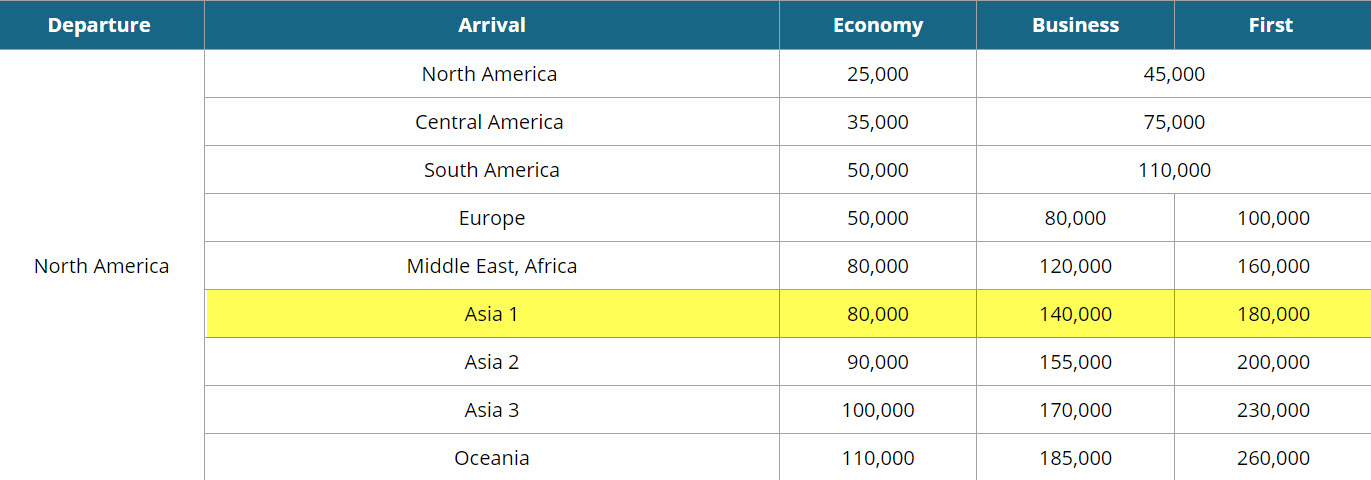
Asia 1 includes Korea & Japan.
Fuel Surcharges: They do add fuel surcharges on award flights, but for Korean Air flights and Delta partner flights to Japan, the fees are reasonable.
Pros: Lots of available award seats on Korean Air flights, especially Business & First Class (but recently folks have been reporting that Korean Air isn’t as generous with opening award seats as they used to be), free stopover (layover of 24+ hours) on one-way award flights (on Korean Air flights only), free stopover & 1 open jaw (flying into a city, leaving from another) on partner award flights
Cons: Partner awards can be harder to find (I’m looking at you Delta), you can only book awards for specific family members, you can no longer hold awards while waiting for your points to transfer
Other notes:
- Korean Air only allows you to book awards for eligible family members.
- For more tips on booking awards with Korean Air miles check out our guide!
Singapore Airlines miles are not particularly useful for getting to Japan. The biggest advantage they have is how easy they are to earn. You can transfer points from Citi ThankYou, Chase Ultimate Rewards, Amex Membership Rewards, Capital One and Marriott to Singapore Airlines. So if you don’t have enough flexible points to get to Japan in any single program, you can easily combine points and book award flights with Singapore Airlines miles.
Transfer ratio: 1:1
Transfer time: Up to two days
Award prices: Japan is in Zone 7 of the Singapore Airlines award chart. Award flights from the West Coast are comparable in price to other options for coach flights, but Singapore Airlines only flies from Los Angeles to Tokyo. And I’m not sure how easy it is to find available award seats. I searched on the Singapore Airlines website for ~15 minutes and could only find partner award flights. Maybe you’ll have better luck.
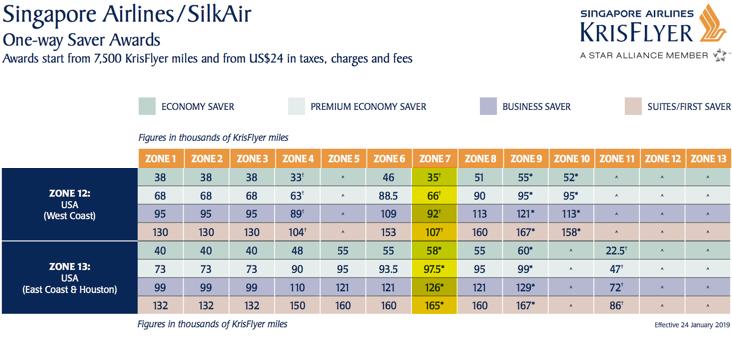
Because of Singapore Airlines’ more restrictive routing rules, I couldn’t find flights with Singapore Airlines from the East Coast. But even if you can find those award seats, you’re better off booking a partner award, which will cost fewer miles. Remember to pay attention to fuel surcharges with certain airlines.
Partner award prices: Singapore Airlines is a member of Star Alliance and has a separate award chart. You can book awards with their partner airlines from North America to Japan for:
- Coach – 108,000 Singapore Airlines miles round-trip
- Business class – 210,000 Singapore Airlines miles round-trip
- First class – 250,000 Singapore Airlines miles round-trip
One-way partner awards are half the price of the round-trip partner awards.
Fuel surcharges: Singapore Airlines does not add fuel surcharges to their own flights, but if you’re booking a partner award flight, you’ll pay fuel surcharges if the airline you’re flying has them. Most European and Asian airlines add hefty fuel surcharges. Others, like United Airlines, don’t have any fuel surcharges.
Pros: Some of the easiest airline miles to earn as they transfer from Citi ThankYou, Chase Ultimate Rewards, Amex Membership Rewards, Capital One and Marriott.
Cons: High cost of awards and restrictive routing rules.
Other notes:
- You are allowed one stopover (layover of 24+ hours) & one open jaw (origin or destination is not the same) on round-trip Saver award flights.
- You can add stopovers on award flights for $100 each (up to three total), but you can’t book them online.
United Airlines
United Airlines prices their awards as Saver awards and Everyday awards. Saver awards are much cheaper, so those are what you’ll want to find and book. Everyday awards can be absurdly expensive and are typically not a good deal.
But the biggest issue with United Airlines is that it has eliminated its award chart. For now, however, partner award prices are staying the same.
Transfer ratio: 1:1
Transfer time: Instant
Award prices:
Again, these prices are from the old award chart and you can expect award prices to go up during peak travel times and for business- or first-class flights. It’s possible you can find good deals in coach during less popular travel times, which is the case with Delta’s SkyMiles sales.
- Coach – 35,000 United Airlines miles for a one-way Saver award, up to 80,000 United Airlines miles for a one-way Everyday award
- Business class – 70,000 United Airlines miles for a one-way Saver award, up to 175,000 United Airlines miles for a one-way Everyday award
- First class – 90,000 United Airlines miles for a one-way Saver award, up to 200,000 United Airlines miles for a one-way Everyday award
Partner award prices:
- Coach – 35,000 United Airlines miles one-way
- Business class – 80,000 United Airlines miles one-way
- First class – 110,000 United Airlines miles one-way
Fuel surcharges: No, United Airlines does not add fuel surcharges for their award flights or partner award flights.
Pros:
- United Airlines awards are easy to find and book and typically there are lots of available award seats.
- No extra fuel surcharges
Cons:
- Business and first-class partner awards are expensive and now that they’ve eliminated their award chart we have no idea what future award prices will be.
Other notes:
- United Airlines allows a free stopover or a free one-way on round-trip award flights in the form of the “United Airlines Excursionist Perk.”
- If you have one of the Chase United Airlines credit cards or United Airlines elite status, you’ll have access to more available award seats.
- For more on how to book awards with United Airlines miles check out our Ultimate Guide to United Airlines Miles.
Virgin Atlantic doesn’t fly to Tokyo or Japan, but they are worth mentioning because they have one of the best options for partner award flights from the U.S. to Japan. And Virgin Atlantic miles are super-easy to collect.
Transfer ratio: 1:1
Transfer time: Instant
Award prices: There are no Virgin Atlantic flights to Tokyo or Japan.
Partner award prices: Virgin Atlantic has a different award chart for each partner airline. But the most useful partner is ANA, and when I say useful, I mean amazing!
All the prices below are for round-trip awards; you can’t book one-way partner award flights:

Those prices aren’t typos. You can book a first-class partner award on ANA from the West Coast to Japan for only 110,000 Virgin Atlantic miles. That’s only 2,000 miles more than what it would take for a Singapore Airlines partner award in coach.
Unfortunately, you cannot book partner award flights online. You’ll have to book them over the phone (800-365-9500).
Fuel surcharges: Yes, but the fuel surcharges on ANA flights are reasonable. I checked a few different flights from the U.S. to Japan and saw fuel surcharges in the $170 range. You’ll spend an additional ~$100 in taxes & fees.
Pros: Incredible ANA awards and you can transfer from Citi ThankYou, Chase Ultimate Rewards, Amex Membership Rewards, and Marriott to Virgin Atlantic – so they’re easy to earn.
Cons: Can’t search for or book partner awards online. Only one useful award flight option to Japan. Fuel surcharges on award flights.
Other notes:
- You can search for ANA awards on the United Airlines website or Air Canada’s Aeroplan site and then call Virgin Atlantic to book the flights.
American Express Membership Rewards points
Amex Membership Rewards points are very helpful for getting to Japan because, as you’ll see, they have lots of useful airline transfer partners and they are easy to earn. If you’ve got a collection of Amex points, ANA is typically the best option for award flights to Japan but one of the best things about Amex Membership Rewards points is the frequent transfer bonuses they have with their partner airlines.
Aeroplan is Air Canada’s loyalty program and it is part of the Star Alliance. Aeroplan is also partners with Cathay Pacific, but you can only redeem Aeroplan miles on a few select Cathay Pacific routes, none of which will get you to Japan.
Aeroplan have average award prices to Japan, but if there is a transfer bonus to Aeroplan it could be a good option.
Transfer ratio: 1:1
Transfer time: Instant
Award prices: A round-trip flight to Japan costs 75,000 Aeroplan miles in coach, 150,000 Aeroplan miles in business class, and 210,000 Aeroplan miles in first class.

One-way awards cost half of the Aeroplan miles required for round-trip flights.
Partner award prices: Aeroplan doesn’t have a separate award chart for partner awards. But they partner with useful airlines for getting to Japan, like United Airlines & ANA.
Fuel surcharges: Yes, but not with all of their partners. If you want to avoid these extra fees, try booking partner awards flights with United Airlines.
Pros: Useful partner airlines, frequent transfer bonuses, can add one stopover or one open jaw on round-trip award flights between two continents
Cons: Fuel surcharges on most flights to Japan, not the best award prices
Other notes:
- Reasonable lap infant fees – $50 to $125 or 5,000 to 12,500 Aeroplan miles.
- For more tips, check out our guide to using Aeroplan miles.
ANA
ANA (All Nippon Airways) is one of the best options for booking award flights to Japan. They have incredible low-season award prices and good partner award-chart prices during other times of the year.
The biggest drawbacks are how complicated ANA’s award charts and rules are and potentially higher taxes and fees on award flights. I’ll keep things as simple as possible by only including information that is relevant to award flights to and from Japan.
Transfer ratio: 1:1
Transfer time: 2 to 3 days
Award prices: Flights from North America to Japan with ANA vary in price depending on when you’re traveling. Awards to and from North America are divided into low (L), regular (R), and high season (H).
In the chart below Y is coach, PY is premium economy, C is business class and F is first class. You can only book round-trip international awards:

Here are the dates for each season through early 2021:

Partner award prices: The only partners useful for flying to Japan are ANA’s Star Alliance partners. You can fly on more than one Star Alliance partner on a single award flight.
You cannot book one-way partner award flights, so all the prices listed are for round-trip tickets. There is one award chart for the entire year, but it is broken down into Zone 1-A & Zone 1-B.
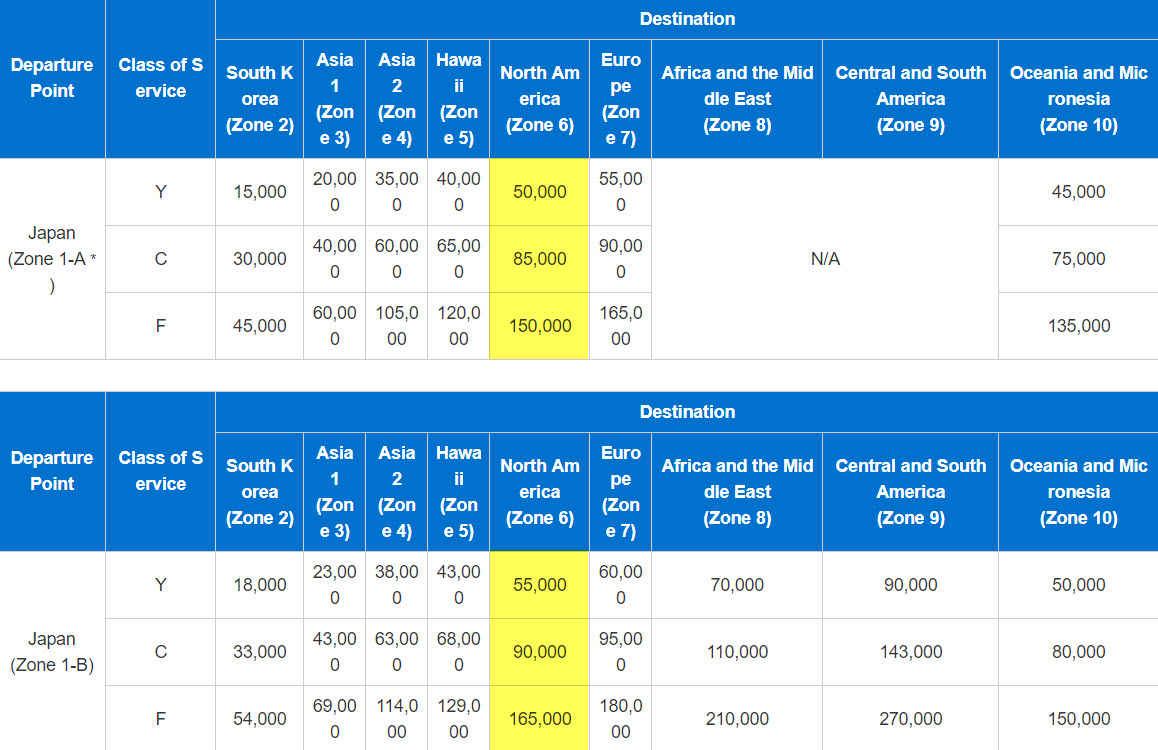
This is how the ANA website explains the difference between Zone 1-A & Zone 1-B:

What this means for award flights from the US to Japan is you will pay Zone 1-A prices for nonstop flights (but you can have connections within Japan) and Zone 1-B prices if you have a connecting flight.
Fuel surcharges: Yes, and they are ~$260 (plus taxes & fees). But you won’t pay this extra fee with certain partners like United Airlines.
Pros: Amazing award prices (especially during low-season), lots of direct flight options from the US.
Cons: Must book round-trip award flights. Confusing and convoluted rules. The extra fees can add up.
Other notes:
- ANA miles expire after 36 months and cannot be extended.
- You can have one stopover and one open jaw on award flights
It’s not uncommon for there to be an Amex Membership Rewards transfer bonus to British Airways and they can be quite generous, which could make British Airways a useful option.
Transfer ratio: 1:1
Transfer time: Instant
For more details on using British Airways Avios points to get to Japan check the Chase Ultimate Rewards points section.
Cathay Pacific Asia Miles
Cathay Pacific operates a distance-based award chart and they are a member of the oneworld alliance, which includes American Airlines and Japan Airlines.
I don’t think Cathay Pacific’s award prices are good enough to justify the hassle you’ll need to go through to understand their award-booking rules, much less to actually book an award.
But they are transfer partners with most flexible points programs, so it might be easier for you to accumulate the miles you need. And booking award seats with Cathay Pacific miles could make sense if you’re already in Asia and want to book a short-haul side trip to Japan.
Transfer ratio: 1:1
Transfer time: 1 to 2 days
Award prices: When you’re flying to Japan on Cathay Pacific you’ll need to connect through Hong Kong, so be sure to add in that connection when you’re calculating the mileage for your award. This extra connection bumps all Cathay Pacific awards from the US to Japan into the “Ultra-Long” category.
So this isn’t a great option for award flights to Japan. But you can book one-way awards, which might be helpful for you.

Partner award prices: The most useful Cathay Pacific partners for getting to Japan are American Airlines and Japan Airlines. Note that with Japan Airlines you can only book round-trip award tickets with Cathay Pacific miles.
If you are booking an award which includes only one partner airline or one partner airline and Cathay Pacific or Cathay Dragon, then you’ll use the “Asia Miles Standard Award” chart shown above. A Standard Award round-trip award flight can have up to three stopovers and one open jaw, but the rules are complicated and this doesn’t apply to all award flights. You can read more about the stopover and open-jaw rules under #5 in the terms.
This oneworld multi-carrier chart below applies if your award flight includes:
- Two oneworld partner airlines, but does not include Cathay Pacific or Cathay Dragon
- Three or more oneworld partner airlines and Cathay Pacific or Cathay Dragon is one of those airlines

For oneworld multi-carrier flights, the stopover and open-jaw policy looks like it could be even more generous but I can’t make heads or tails of it. And I’m not sure how practical it is for most flights to Japan anyway.
Fuel surcharges: Yes, but certain airlines don’t add them (e.g., American Airlines).
Pros: Miles are easy to earn – they transfer from Amex Membership Rewards, Citi ThankYou, Capital One and Marriott. Useful for short-haul or one-way awards. Potentially generous stopover and open-jaw policy.
Cons: Expensive award prices. Overly complicated. The most useful partners (for getting to Japan) can’t be booked online.
Other notes:
- You can book award flights online if you’re flying on Cathay Pacific, Cathay Dragon, Alaska Airlines, British Airways, Finnair, Iberia, Qantas, or Qatar Airways. But for awards which include any other partner airline (which covers most of your options to Japan), you’ll need to fill out a “Flight Award Request Form“ or call 866-892-2598 to book your award.
- Use this tool to figure out how much a specific award flight will cost.
- Sometimes you’ll get a phone agent who doesn’t completely understand Cathay Pacific’s convoluted award booking rules. Don’t be afraid to hang up and call again.
Delta
Delta no longer publishes an official award chart, so it’s hard to estimate how many Delta miles it will cost to get to Japan. And they are a part of the SkyTeam alliance, which doesn’t include any of Japan’s major airlines.
But Delta does have frequent SkyMiles award sales, including great deals to Asia. So this is a good option to keep in your back pocket in case a deal pops up.
Transfer ratio: 1:1
Transfer time: Instant
Award prices: Delta doesn’t have an award chart.
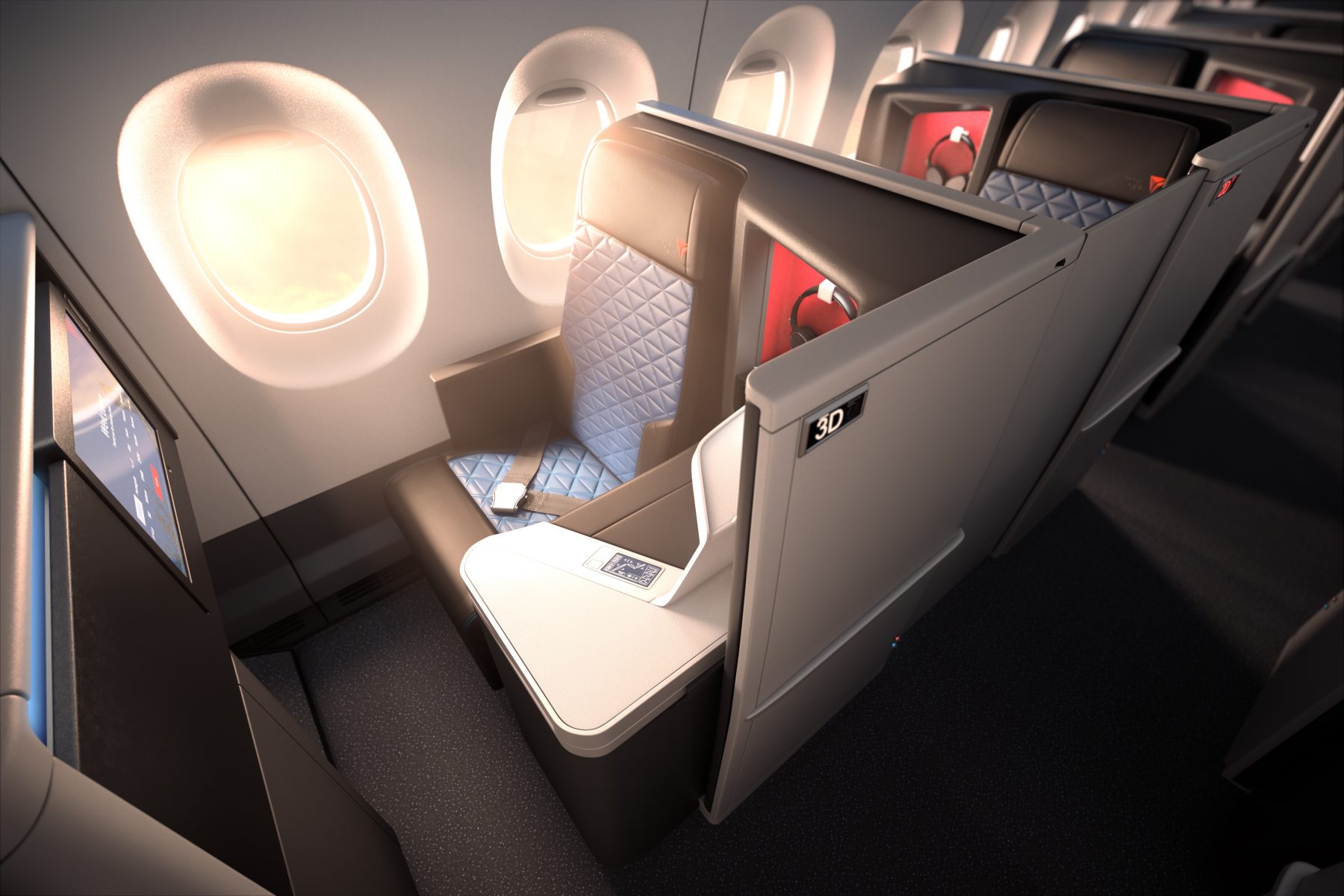
Partner award prices: No partner award chart, but partner awards to Japan tend to have similar prices to Delta award flights.
Fuel surcharges: Yes, but not on Delta flights originating in the US.
Pros: Potentially useful award sales.
Cons: No award chart, fewer non-stop flight options compared to other airlines.
Other notes:
- I’ve seen Delta award sales to other parts of Asia and directly to Japan. These sales could be a good way to get close to Japan and then get a cheap flight for the final leg and see an extra country on the way over.
Hawaiian Airlines
Hawaiian Airlines has terrible award prices for flights from the US to Japan. They also don’t have any nonstop flights to Japan and you aren’t allowed a stopover in Hawaii, which is the only reason I’d want to connect in Hawaii on my way to Japan. In addition, I’m not sure how easy it is to find the cheapest awards, so that only increases the cost.
But there have been transfer bonuses to Hawaiian Airlines in the past. That could make this a more interesting opportunity, but only if you want to top up your Hawaiian Airlines account for an award flight.
Transfer ratio: 1:1
Transfer time: Instant
Award prices: The prices listed in the chart below are for one-way award tickets.

Partner award prices: No practical partner award options for flights to Japan.
Fuel surcharges: No
Pros: Low fees.
Cons: No nonstop flights to Japan. No stopovers in Hawaii. Terrible award prices.
Other notes:
- This is only a useful option if you already have a collection of Hawaiian Airlines miles and only need to transfer a small amount of Amex Membership Rewards points to top off your account, or if you live in Hawaii.
Iberia operates a distance-based award chart, just like British Airways. And you can even transfer Avios points between your Iberia & British Airways accounts.
Iberia is a member of the oneworld alliance, so you’ll be able to book partner award flights with Japan Airlines, American Airlines, and Cathay Pacific.
Transfer ratio: 1:1
Transfer time: 1 to 2 days
Award prices: No Iberia flights to Japan.
Partner award prices: Iberia has a separate award chart for each of their partner airlines, although most are exactly the same. What you’ll pay is based on the total distance of the trip. For most partners, you’re only allowed to book round-trip award flights.
If you are booking an award with more than one oneworld partner, you’ll use the award chart below. It is the same chart as the award charts for flights with American Airlines and Japan Airlines, which are two of the more useful partners for flying to Japan.
Most nonstop round-trip flights from the US to Japan will be between 10,000 to 14,000 miles in distance, so I’ve highlighted those award prices.

The best deals will be on the shortest flights, so you’ll want to look for nonstop flights on American Airlines or Japan Airlines.
Fuel surcharges: Yes, but certain partners, like American Airlines, don’t have fuel surcharges.
Pros: Good award prices for certain shorter flights. Easy to earn – they transfer from Amex Membership Rewards, Chase Ultimate Rewards, Marriott, and British Airways.
Cons: Some partner awards can only be booked over the phone (which incurs an extra fee). Partner awards are non-refundable.
Other notes:
- You can book American Airlines partner awards online, but you’ll need to call to book partner awards with most other airlines.
Singapore Airlines miles are not particularly useful for getting to Japan. The biggest advantage they have is how easy they are to earn. You can transfer points from Citi ThankYou, Chase Ultimate Rewards, Amex Membership Rewards, Capital One and Marriott to Singapore Airlines. So if you don’t have enough flexible points to get to Japan in any single program, you can easily combine points together and book award flights with Singapore Airlines miles.
Transfer ratio: 1:1
Transfer time: Up to two days
Virgin Atlantic doesn’t fly to Tokyo or Japan, but they are worth mentioning because they have an amazing award chart for partner award flights on ANA. Plus, Virgin Atlantic miles are super-easy to collect and there’s a 30% transfer bonus through July 1, 2019.
With the 30% bonus, you’ll only need to transfer 85,000 to 93,000 Amex Membership Rewards points to Virgin Atlantic to book a round-trip first class award on ANA to Japan. You’ll have a hard time finding a better deal than that.
Transfer ratio: 1:1
Transfer time: 1 to 2 days
Capital One miles
Capital One is a newcomer when it come to transferable points. Until late 2018 you could only redeem Capital One miles at a rate of 1 cent each toward travel expenses. Now you can transfer Capital One miles to several airline partners, but the transfer ratio isn’t as favorable as it is with other programs.
The transfer ratio for most airlines is 2:1.5 (two Capital One miles convert into 1.5 airline miles) and the transfer ratio for Emirates and Singapore Airlines is 2:1.
You can earn Capital One miles with the:
- Capital One Venture Rewards Credit Card
- Capital One Spark Miles for Business
- Capital One VentureOne Rewards Credit Card
- Capital One Spark Miles Select for Business
Even though Capital One miles don’t have the best transfer ratio, they can be easier to earn because both the Capital One Venture and Capital One Spark Miles Business cards earn 2x miles on every purchase. You could look at that earning ratio as earning 1.5 airlines miles (for most airline partners) per dollar, which is a good rate for non-bonus-category spending.
Aeromexico only flies to Tokyo from Mexico City, but they are a part of the SkyTeam Alliance so you can use Aeromexico miles to book flights with Delta, Korean Air and several Chinese airlines.
Transfer ratio: 2:1.5
Transfer time: Instant
Award prices: For award flights with Aeromexico from the U.S. to Japan (connecting through Mexico) this chart shows the round-trip price:
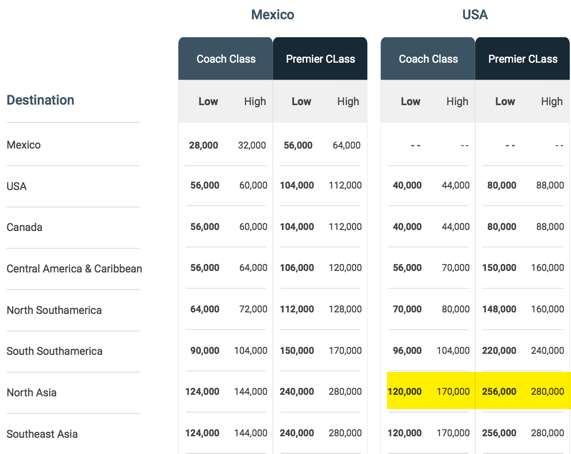
You can book one-way flights for half the number of miles. The taxes and fees on a round-trip flight on Aeromexico from the U.S. to Japan should run you $100-$150.
Partner award prices: You can’t book Aeromexico partner awards online, so you’ll need to find the award seats on another carriers website and then call to book. The best places to search for Skyteam award seats are the Delta or Flying Blue websites.
In this case partner award flights from the U.S. to Japan cost the same as award flights on Aeromexico planes. The taxes and fees will vary depending on what airline you’re flying and what country you’re routing through (if any).
Fuel surcharges: Aeromexico does add fuel surcharges to its own flights and to partner awards.
Pros:
- Stopover in Mexico City on your way to Japan
- Marriott points and Amex Membership Rewards also transfer to Aeromexico, so it’s easy to combine points from all three programs to book more expensive awards. Keep in mind that Amex has a much better transfer ratio of 1:1.6 (1 Amex point = 1.6 Aeromexico miles)
Cons:
- Fuel surcharges can be high depending on the partner or routing
- Not easy to search for or book partner awards
- With the 2:1.5 transfer ratio, awards can cost a lot of Capital One miles
Other notes:
- Allowed a free stopover per round-trip award
Transfer ratio: 2:1.5
Transfer time: Instant
See the Air Canada notes under the Amex Membership Rewards section for more details.
Avianca is a member of the Star Alliance and doesn’t add fuel surcharges to award flights, which makes its program a good option for booking ANA award flights to Japan.
Transfer ratio: 2:1.5
Transfer time: Instant
Award prices: Avianca doesn’t fly to Japan.
Partner award prices (one-way):
- Economy – 35,000 miles
- Business class – 75,000 miles
- First class – 90,000 miles
Keep in mind that Avianca partner awards can sometimes cost less than the lowest award chart price (depending on the destination) and if you have a connecting flight, you can get cheaper premium seats by booking a mixed-cabin itinerary.
For example, let’s say you want fly from Madison, Wisconsin to Tokyo via Chicago on United Airlines. If you booked the entire flight in business class you’d expect to pay 75,000 miles one-way, but if you took the Madison-to-Chicago leg in economy, you might find that the price of the award will drop. The drop in price isn’t always significant, but it can be 10%+ and most other airline loyalty programs charge the full business-class/first-class price even if only a single leg of your itinerary is in business class or first class.
Fuel surcharges: No fuel surcharges are added to award tickets
Pros:
- Great award prices and mixed-cabin awards cost less
- Occasional award sales can be excellent deals
- Avianca miles can be purchased cheaply during sales
- Easy miles to earn because they transfer from Amex Membership Rewards, Marriott and Citi ThankYou
- You can book partner awards online
Cons:
- Less than stellar customer service if you need to cancel or make a change to your flight
Other notes:
- $25 award booking fee added to all awards, even if they’re booked online
Transfer ratio: 2:1.5
Transfer time: Three to five days
Etihad has a different award chart for each partner airline and you can’t book partner awards online. However, it can be worth going through the extra headaches to book flights to Japan with Etihad. If you’re willing to jump through the extra hoops, you can book some incredible deals.
Transfer ratio: 2:1.5
Transfer time: 24 hours
Award prices: Etihad does fly to Tokyo from Abu Dhabi, but the prices aren’t good, so only use Etihad miles to book partner award flights to Japan.
Partner award prices: Etihad has a different award chart for each airline partner. The best options for getting to Japan with Eithad miles are American Airlines, ANA and Asiana. Also, Etihad allows stopovers on all three of these partners.
Here is the American Airlines partner award chart, all prices shown are for one-way awards:
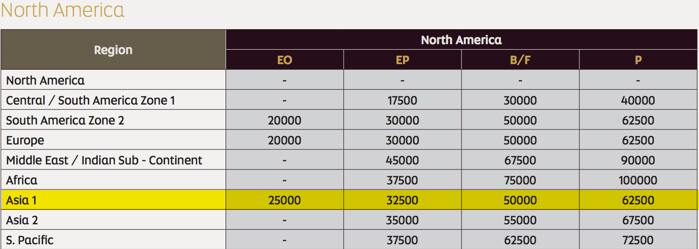
Japan is in the “Asia 1” zone, so economy awards are only 25,000 miles one-way during the off-peak season from Oct.1-April 30. The tail end of the off-peak season even includes cherry blossom season.
Etihad also has exceptional award prices for American Airlines business and first-class flights. The toughest part will be finding open saver-level award seats with American.
This is the ANA partner award chart. These are one-way prices:
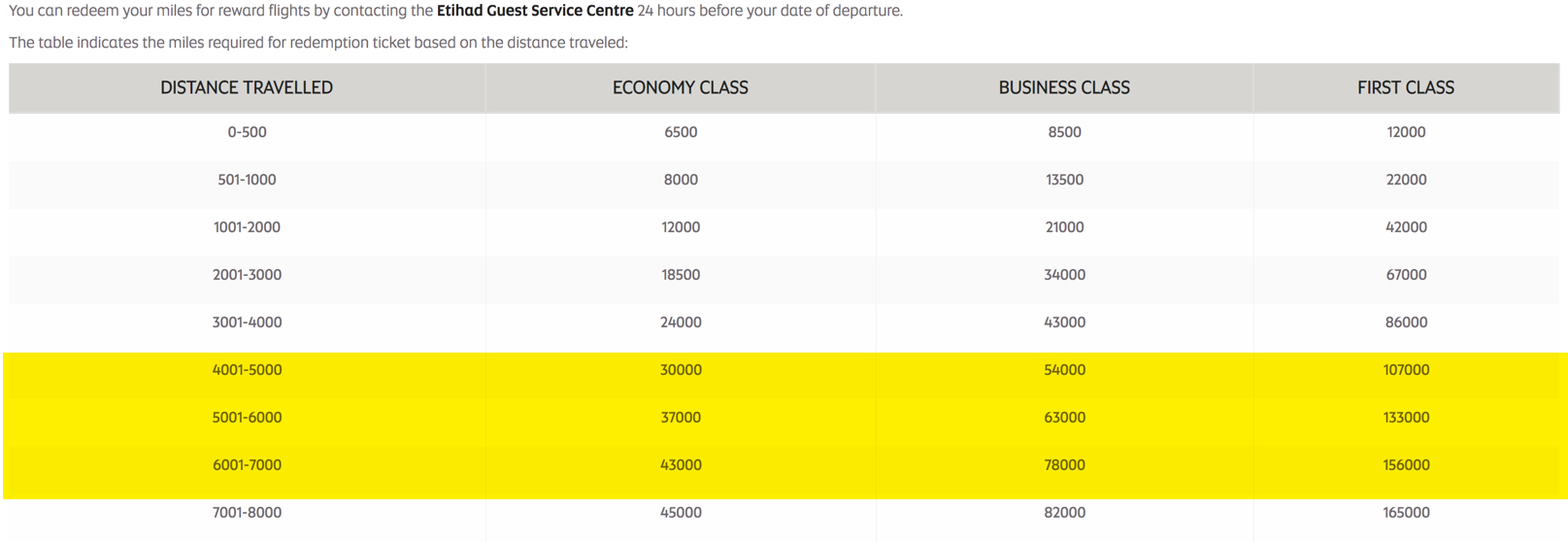
ANA has a distance-based award chart and all ANA flights from the U.S. to Japan (except for flights from Honolulu) fall into the 4,000-7,000 zones I’ve highlighted above. Economy and business-class flights from the West Coast can be decent deals if you can’t find awards with American Airlines, but I would avoid the over-priced first-class flights.
The Asiana award chart is distance based, just like the ANA chart:

All of the prices in this chart are for one-way awards, but you can only book round-trip partner awards with Asiana. Unless you’re departing from Honolulu or Seattle, your flight distance will be over 6,000 miles because you’ll be connecting through South Korea on your way to Japan. Flying from Seattle to Tokyo via Seoul clocks in at 5,999 (according to the great circle mapper). If that route falls into the 5001-6,000 mile zone you could book a round-trip business-class flight for 118,000 miles which is a good deal, especially if you want to add in a free stopover in Seoul.
Unfortunately, the other Asiana routes from the U.S. to Japan aren’t great deals.
Fuel surcharges: Yes, but it varies depending on the partner airline.
Pros:
- Exceptional prices with American Airlines
- Easy to earn, you can also transfer points to Etihad from Marriott, Citi ThankYou and Amex Membership Rewards
Cons:
- Different award chart for each partner
- Fuel surcharges (depending on the partner airline)
- Can’t search for or book partner awards on the Etihad website
Other notes:
- Find the award flights you want to book before you call Etihad. You can search for American Airlines awards on the British Airways or Qantas sites and the United Airlines site is a good place to look for ANA or Asiana awards.
Flying Blue, the loyalty program of Air France and KLM, no longer has an award, but you can get an idea of what a flight will cost using its “Miles Price Estimator.” The problem with Flying Blue miles calculator is that the prices you’re given won’t always hold up when you search for flights. What you’ll pay for an award can vary depending on the specific city pairing.
So if you want to use Flying Blue miles for flights to Japan, it’s best to do a some research on the routes that work best for you.
Transfer ratio: 2:1.5
Transfer time: Instant
Award prices: Air France and KLM fly to Tokyo through Paris and Amsterdam respectively. The award calculator says you’ll pay 46,000 miles one-way in economy and 95,000 one-way in business.
Partner award prices: Useful Flying Blue partners for booking awards to Japan include Japan Airlines, Delta, and Korean Air. I found partner awards from the US to Japan for 46,000 in economy and 106,000-115,000 in business class.
Fuel surcharges: Yes, but reasonable in economy and they aren’t added to Delta flights.
Pros:
- Lots of good partner airlines
- Easy to earn because they transfer from Chase Ultimate Rewards, Amex Membership Rewards, Citi ThankYou and Marriott
Cons:
- Variable pricing
- High award fees on some flights
Transfer ratio: 2:1
Transfer time: 1 to 2 days
Citi ThankYou points
Citi ThankYou points And Citi ThankYou points have become easier to earn thanks to the Citi® Double Cash Card, which earns 2% cash back (1% when you buy and 1% when you pay), but if you have the Citi Prestige® Card or Citi Premier® Card you can convert the cash back you earn into transferrable ThankYou points at a rate of one dollar to 100 points.
The information for the Citi Double Cash Card has been collected independently by Million Mile Secrets. The card details on this page have not been reviewed or provided by the card issuer.
Transfer ratio: 1:1
Transfer time: Instant
For specifics on how to use Aeromexico to visit Japan see the Aeromexico section under Capital One miles.
Transfer ratio: 1:1
Transfer time: Instant
For specifics on how to use Avianca to visit Japan see the Avianca section under Capital One miles.
Transfer ratio: 1:1
Transfer time: Up to 24 hours
Transfer ratio: 1:1
Transfer time: Variable, but typically 1-3 days
For specifics on how to use Etihad to visit Japan see the Etihad section under Capital One miles.
Transfer ratio: 1:1
Transfer time: Instant
For specifics on how to use Flying Blue to visit Japan see the Flying Blue section under Capital One miles.
Qantas
Qantas is a member of the oneworld alliance and while it doesn’t fly direct from the U.S. to Japan you can use its program to book flights with Japan Airlines, Cathay Pacific and American Airlines. Qantas is also a transfer partner with Amex Membership Rewards, Marriott and Capital One.
Also, the Qantas Airways website is a great place to search for oneworld airline award availability even if you don’t plan on booking the flight with Qantas miles.
Transfer ratio: 1:1
Transfer time: 1-2 days
Award prices: Qantas operates a distanced-based award chart and if you want to use Qantas miles to fly on Qantas planes to Japan you’d need to route through Australia, which would bump the price into the highest tier. But this award chart is also valid for flights with American Airlines, which flies to Japan from Los Angeles and Dallas. The prices from those cities are highlighted below, but if you add in a long connection is could be a bit more expensive.
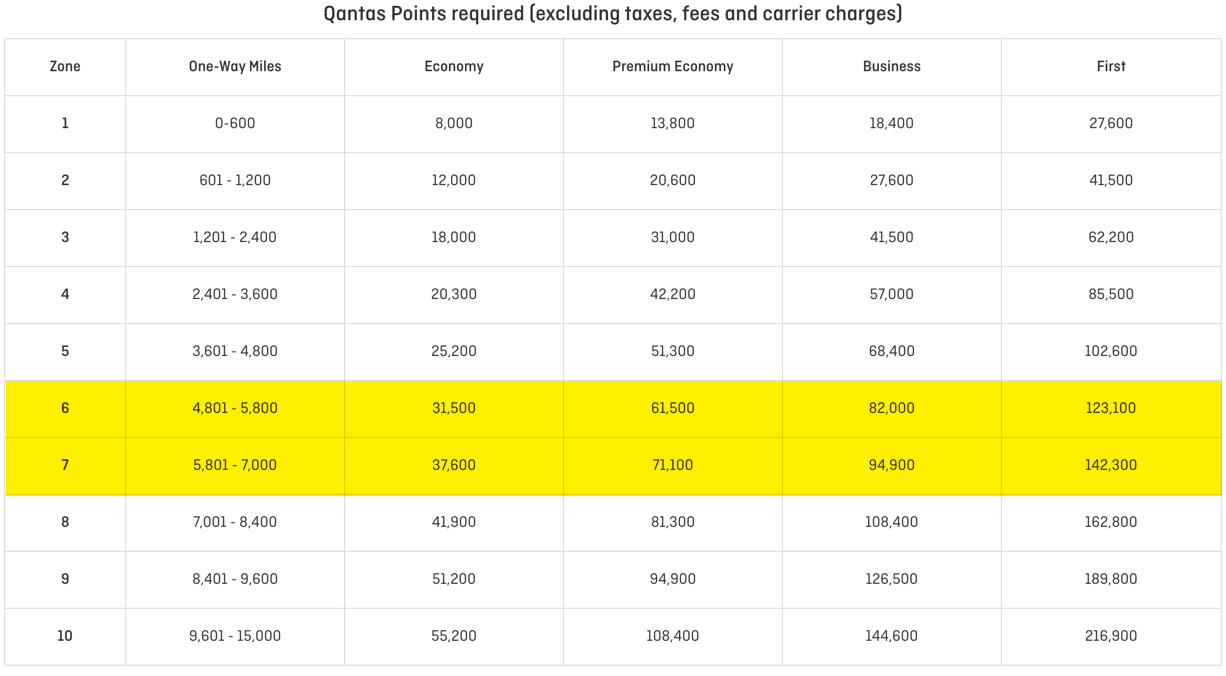
These prices are higher than what American Airlines charges for its own flights, unless you can book an economy ticket with a flight distance under 5,800 miles.
Partner award prices:
These prices apply to flights with other partner airlines, like Cathay Pacific, Japan Airlines, China Airlines and China Eastern. But again, these prices aren’t good compared to what you’d pay with other oneworld partners, like American Airlines.
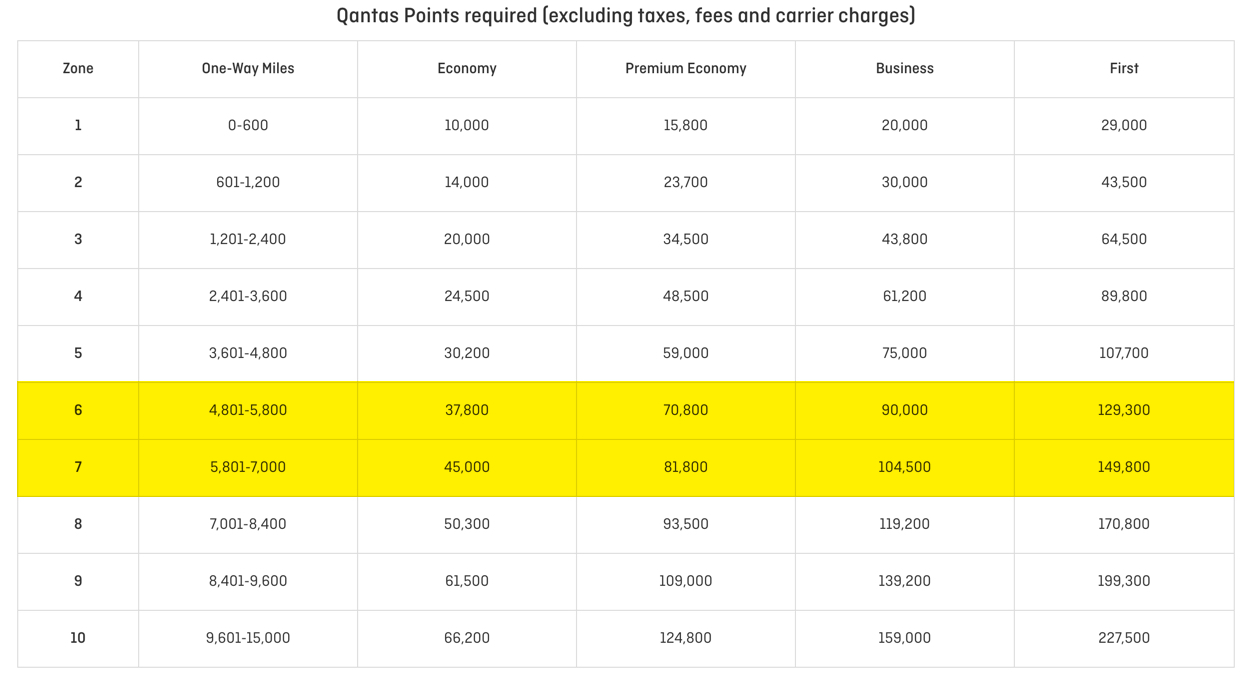
Fuel surcharges: Qantas does add fuel surcharges
Pros:
- Can book connections without paying for a separate award
Cons:
- Distance-based award chart
- High prices
Transfer ratio: 1:1
Transfer time: Up to 24 hours
Turkish Airlines
Transfer ratio: 1:1
Transfer time: 1-2 days
Award prices:
Turkish Airlines charges the same for flights on its own planes or for partner awards. The prices aren’t spectacular, but they’re not outrageous either. In general, you probably won’t be better off using Turkish Airlines miles to get to Japan, but they could be good if you wanted to first fly to Hawaii to position yourself for a flight to Japan from there. Turkish Airlines only charges 15,000 miles for a round-trip economy award from the mainland U.S. to Hawaii on United Airlines. Also, because the best deals on cash flights or distanced-based awards are usually from the West Coast you could also use this 15,000-mile sweet-spot to position yourself to take advantage of those awards.

Fuel surcharges: Yes, but they aren’t outrageous.
Pros:
- Super cheap awards on position flights to Hawaii or other U.S. cities.
Cons:
- Average awards prices
Transfer ratio: 1:1
Transfer time: Instant
Bottom line
Japan is one place that should be on your travel wish list. Even outside of cherry blossom season, it is one of the most beautiful and cleanest countries I’ve visited, and the people couldn’t be more helpful.
Plus, getting there doesn’t have to cost a fortune. With transferable points, there’s no shortage of options for booking award flights. My wife and I were able to fly to Japan in first class and back from Japan in business class for only a few hundred dollars out of pocket per person. That’s the power of miles and points.
| For more travel and credit card news, deals and analysis sign-up for our newsletter here. |
Editorial Note: We're the Million Mile Secrets team. And we're proud of our content, opinions and analysis, and of our reader's comments. These haven’t been reviewed, approved or endorsed by any of the airlines, hotels, or credit card issuers which we often write about. And that’s just how we like it! :)






Join the Discussion!